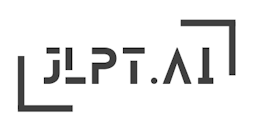

N1
音読み:jou
訓読み:nawa
ジョウjou
なわnawa
Rope, cord
Imagine a rope made of threads woven together. The threads symbolize the individual parts, and the rope represents their unity and strength.
The kanji '縄' is a higher level character that may appear in JLPT N1 exam materials. Understanding its meaning and readings is important for both kanji and reading comprehension sections of the exam.
彼は縄で犬を繋いでいる。
He is tying the dog with a rope.
かれはなわでいぬをつないでいる。
kare wa nawa de inu o tsunaide iru.
縄跳びで遊んでいる子供たちを見ました。
I saw children playing with a jump rope.
なわとびであそんでいるこどもたちをみました。
nawatobi de asonde iru kodomotachi o mimashita.
縄文時代は約1万4千年前から約3千年前まで続いた。
The Jomon period lasted from about 14,000 years ago to about 3,000 years ago.
じょうもんじだいはやく1まん4せんねんまえからやく3せんねんまえまでつづいた。
joumon jidai wa yaku ichiman yonsen nen mae kara yaku sanzen nen mae made tsuzuita.